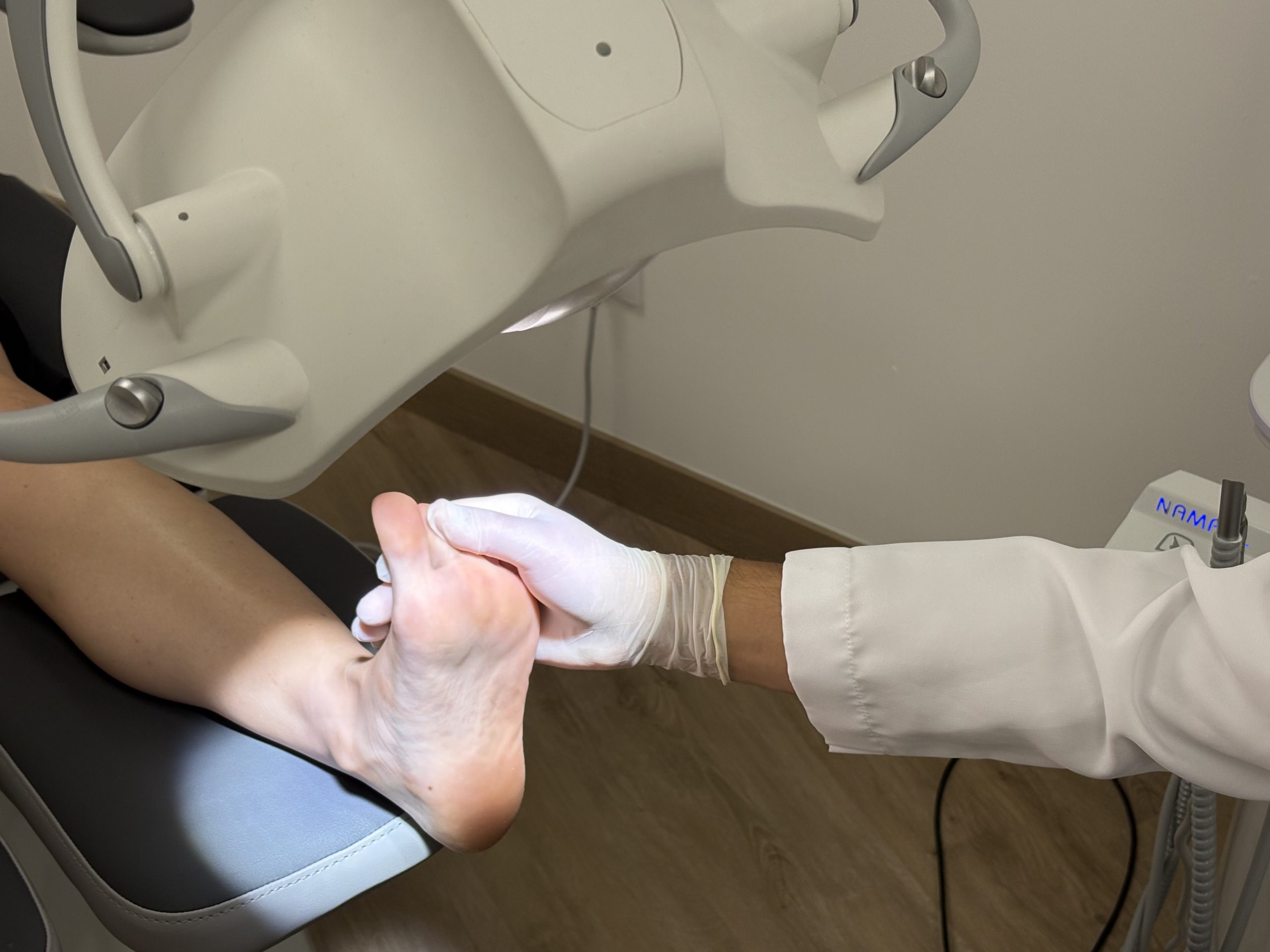Fungal infections on the feet are a common reason for medical consultation, as they can affect both the skin and the nails. Foot mycosis is an infectious disease caused by the presence of different types of fungi, and it is advisable to treat it in time since it can cause discomfort and aesthetic problems for the patient.
They are usually more common during the summer months due to the heat, although they can appear at any time of the year.
Contagion occurs when the skin or nail comes into contact with the fungus through wounds or openings. Moisture and heat, as well as the use of inappropriate footwear, promote its appearance and subsequent development.
There are different types of foot fungus:
- Onychomycosis (nail fungus): Onychomycosis is a fungal infection of the nail plate or nail bed. The nails become deformed and discolored, appearing yellowish or whitish, and they become thick and brittle. Treatment involves the use of antifungal nail lacquers or varnishes, along with appropriate podiatric care in the clinic to maximize the effectiveness of the topical treatment. In more severe cases, with more extensive involvement or when topical treatment fails, oral medication may be recommended.
- Athlete’s foot (skin fungus): This is a fungal infection that affects the skin and usually occurs after exposing the feet to humid or warm environments, as well as walking barefoot in public places or swimming pools. It often causes itching and a bad odor; the skin cracks, leading to pain. Treatment consists of using topical antifungal medications, and in more severe cases, oral treatment may be required.



